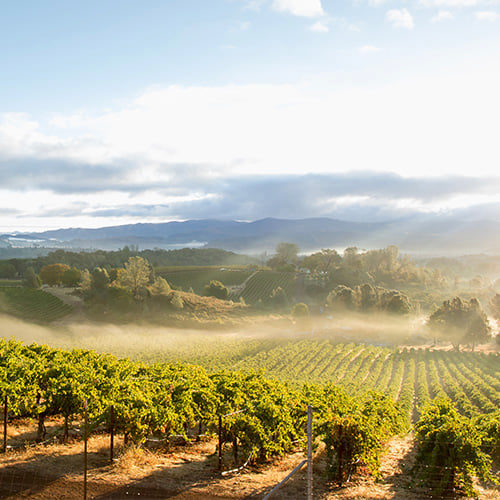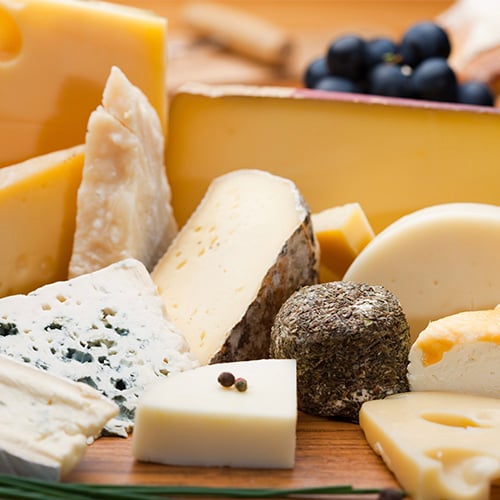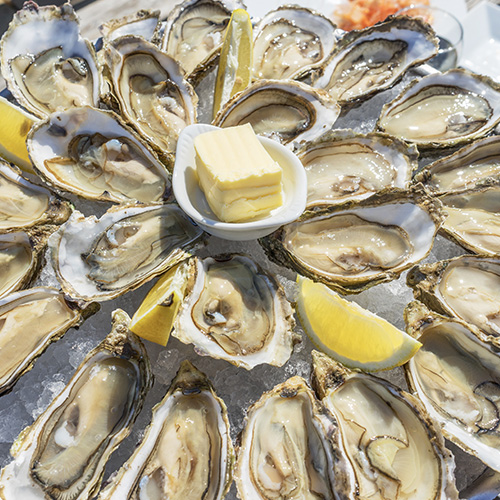What Is Terroir?
Last updated on Jul 13, 2023Val GoodrichIf you’ve ever been to a wine tasting, then you’ve probably heard the sommelier mention “terroir” after taking a big whiff and a small sip from their glass. Following closely behind are the flavor notes of the wine that everyone is picking up. But what is terroir, and why are people detecting notes like "leather" and "oak" in wine? Below we break down what terroir is as well as its effects on the taste of food and beverages.
Terroir Definition

Terroir refers to the geographical conditions of a place that affect the taste of what is grown there. These geographical conditions include soil, climate, topography, and the people that grow the food. All of these factors affect the overall taste of food, making it almost impossible to replicate when grown in different places around the world, even if the same growing techniques are used.
For example, cacao is grown throughout many different regions of the world. Because of terroir, you’ll find that some cacao reflects fruity notes once it’s turned into chocolate, while others are deeper and more robust tasting. Even if the same cacao variety is used with the same growing practices, the geographical conditions of the region will affect the taste of the cacao and, therefore, the chocolate.
What Is Terroir in Wine?

We usually refer to terroir when talking about wine. Wine is very complex, which is why sommeliers have to pass certification processes in order to be hired. Anyone wanting to become a sommelier has to go through rigorous studying to pass multiple levels of tests in order to be a certified sommelier, and terroir plays a big role in building up to this level of complexity.
This complexity starts with the grapes that are grown in the various vineyards throughout the world. While grape varietals matter for the end product’s result, the terroir of that region also plays a huge factor in the flavor notes that the grapes will pick up. The wine grower, or “vigneron”, uses their skill and expertise to influence the terroir, too.
After growing and harvesting, the grapes are then pressed, fermented, aged, filtered, and bottled. Winemakers can use so many different techniques and practices within those final steps to also affect the terroir of the wine.
What Is the Appellation d'Origine Controlee?
Because a wine’s terroir is so coveted, rules and regulations have been put into place to protect it. The Appellation d'Origine Contrôlée (AOC), meaning “controlled designation of origin”, is France’s official set of standards for winemaking. This came about in order to protect certain products in the marketplace whose identity and authenticity come from the factors of terroir.
You’ve probably heard the rule “it’s only Champagne if it comes from the Champagne region of France”. Thanks to the AOC, this is true as it’s protecting the Champagne region vineyards and growers from losing their credibility by having other sparkling wines name themselves “Champagne” to try and capitalize off of the status. Even if the same grape varietals are grown outside of the Champagne region to try and make authentic Champagne, the terroir is not the same, therefore it does not taste how real Champagne is supposed to taste, according to the AOC.
Spain and Italy have programs like the AOC in place, too. Italy has the Denominazione di Origine Protetta (DOP) protecting foods like Parmigiano-Reggiano, olive oil, and certain regional prosciutto. Spain has the Denominación de Origen (DO), protecting terroir-influenced foods like ham and manchego.
Examples of Terroir
While terroir is most commonly associated with wine, it can also be present in anything that grows in soil. It's also found in the milk that comes from animals because of the grass they eat. Climate also plays a role in terroir as it's so different in various parts of the world, which is why sourdough bread tastes better when made in the foggy San Francisco climate. Terroir can also come from aging processes, like cave-aged or bacteria-injected cheese varieties.

Below are more examples of foods with distinct terroir:
- Chocolates
- Olives
- Tomatoes
- Single-origin coffee
- Tea
- Cheese
- Butter
- Cider
- Hops
- Agave for tequila
Meaning of Terroir
Terroir is a French term, so unsurprisingly, “terroir” was derived from the French language’s word for earth, “terre”.
What Are the Four Factors of Terroir?
The four factors that makeup terroir are climate, soil, topography, and people. The first three are environmental factors that take into consideration geographical conditions like sunlight, rainfall, air quality, temperature, land elevation, soil type, and even plants that are growing nearby.
”People” being the fourth factor of terroir may seem strange, but this takes into account traditional or new ways of growing and harvesting grapes, as well as making and aging the wine.

What Is Merroir?
Where terroir refers to the environmental effects on foods from the land, merroir refers to the foods in the sea. Bivalves like clams and oysters are very susceptible to the effects of merroir, especially oysters. Their taste and shape are different in all of the oyster-harvesting areas of the world, including pear-shaped shell outlines with briny meat, deeply fluted shell edges with sweet and buttery meat, or saucer-shaped shells with mineral-tasting meat.
Understanding terroir opens the door to appreciating food on a whole new level. Recognizing flavor profiles because of terroir comes especially in handy when building a restaurant wine list! Knowing the flavor subtleties in products like chocolate, wine, or coffee allows you to use them in your own special way, setting your menu apart and heightening your culinary knowledge.



